Cactus rot is a very common problem, and one of the main causes of their death. It can start anywhere on the plant – from the bottom, the top, or somewhere in between.
But just because your cactus is rotting doesn’t mean you can’t save it. No matter where it starts, there are steps you can take to remove it and stop it from spreading.
In this post, I’ll talk about the causes and symptoms, answer all of your questions, and give you step-by-step instructions for how to save your cactus from dying.

Why Is My Cactus Turning Brown?
When a cactus turns brown and gets soft, mushy, or squishy, it’s likely caused by rot. It’s not always brown, it can also appear black or yellow in color.
Unfortunately, once it starts, it won’t stop. Without intervention, it will continue to spread all the way through the entire stem, eventually killing the plant.
Related Post: How To Care For Cactus Plants
Why Is My Cactus Rotting?
The main cause is usually excess moisture, which can either be from overwatering or from water pooling and sitting on top of the plant. But sometimes it could be caused by a fungus or disease.
- Cactus bottom rot is usually caused by overwatering. An overwatered cactus doesn’t always start rotting right away, and it can begin below the soil surface. So it might not be obvious that was the cause.
- Cactus tip or stem rot is common on damaged plants. It is usually caused by a fungus or a disease infecting the wound, or from watering getting into it, causing the plant to rot from the inside out.
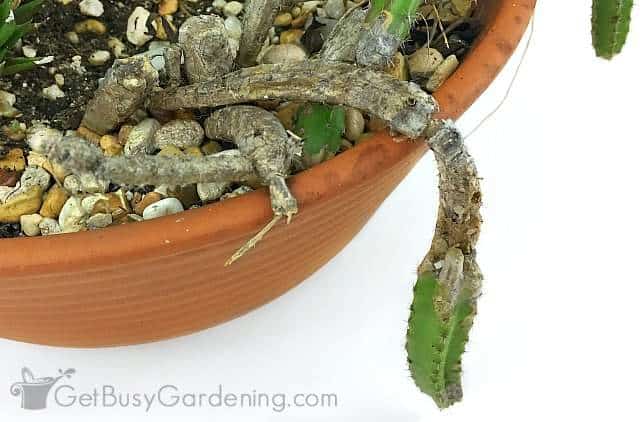
How To Save A Rotting Cactus
Once you notice rot you’ll need to act fast, because it will spread quickly and eventually kill your cactus. The steps for saving your plant depend on where it started.
So first I will show you the steps for how to save a cactus that is rotting top down. Then, in the section below that, I’ll talk about saving one that’s rotting from the bottom up.
Related Post: How To Water A CactusPlant
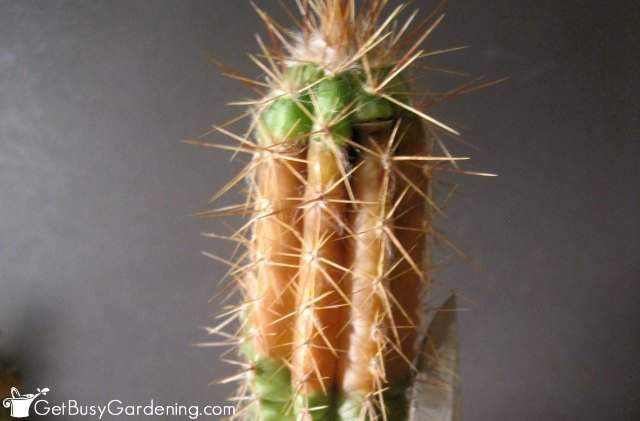
How To Save A Cactus Rotting Top Down
Cactus tip or stem rot can be very deceiving. You may notice small brown spots and think that there’s just a tiny bit.
Then, once you start removing the bad spots, many times you’ll realize that it’s much, much worse on the inside than it looked on the outside.
So first, take a moment to prepare yourself for what you may find once you start cutting. Ready? Ok, let’s do this one step at a time…
Step 1: Choose the right tool – You can use either a sharp knife or a pair of pruning shears to remove the rot. If your cactus is really thick, then I recommend using a sharp knife.
For small plants with thin stems, precision pruners or bonsai shears would work great. Just make sure they’re super sharp so they don’t crush the stem.
Step 2: Clean the blades (do NOT skip this step!) – Whatever tool you choose to use, it’s extremely important that you clean and sterilize it before making any cuts. This will help prevent infection or the spread of disease and fungus spores.
You can simply wash the blades with soap and warm water, or sterilize them with rubbing alcohol, and then dry them before you start. I also recommend that you clean them again between each cut.
Step 3: Remove the rot in layers – It’s best to cut the rot off in layers so you’re sure that you got it all, without removing too much of the healthy tissue in the process.
In the photo below, you can see that the center of the healthy-looking portion of my cactus still has rot on the inside. So we have to keep going…
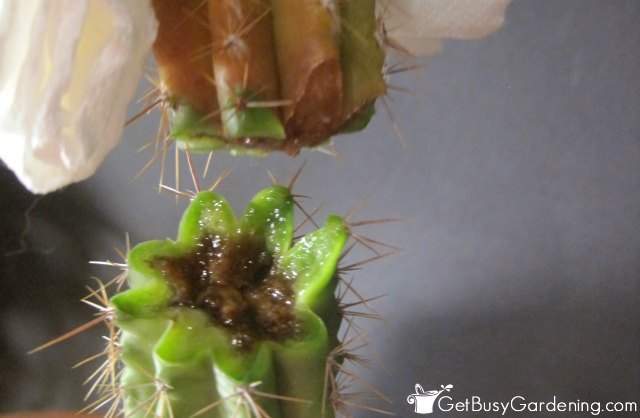
Step 4: Continue removing layers – As you work your way down, slowly cutting off small sections of the stem, the rot will get noticeably thinner and thinner.
But remember, even a tiny bit of it will likely continue to spread. So, be sure you remove all of the brown, soft, and mushy cactus material until no more signs of rot remain.
If yours is outdoors, make the last cut at a downward angle so water won’t settle into the wound (which will likely cause it to rot again). I would also move it to a dry area where it’s protected from rain until the wound has callused over, if possible.
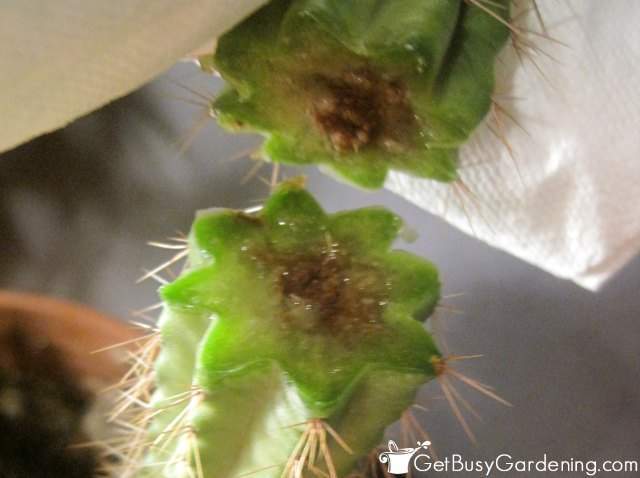
Unfortunately, the rot on this cactus was really severe before I noticed that the top was turning brown. So I had to cut off over half of the stem to get rid of all of it.
As difficult as it was for me to remove such a large section, I know my plant would have been dead in a matter of weeks if I hadn’t done anything to save it.
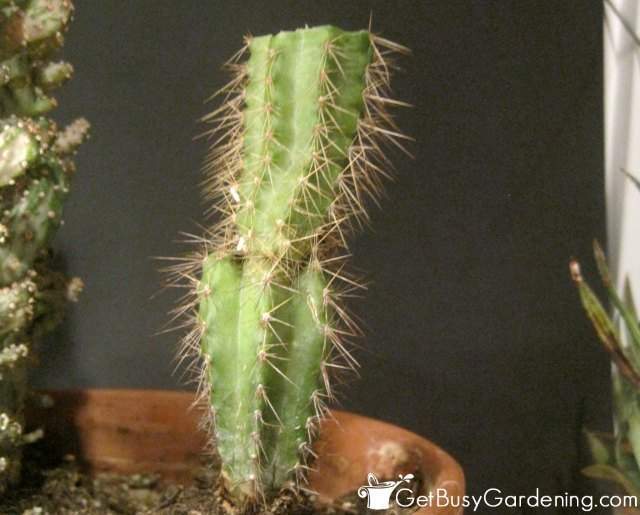
Monitor Your Plant Afterward
If you have to perform this type of surgery on one of your beloved cacti, keep an eye on it afterward to make sure it doesn’t continue to rot. If it starts again, follow the same steps above to remove the new rotting section.
After a couple of days, the wound should callus over, and your plant will eventually send out new growth near the cut.
I was very sad that I had to basically cut my cactus in half to remove all of the rot. But heck, in the end I think it added more character to the plant, don’t you?
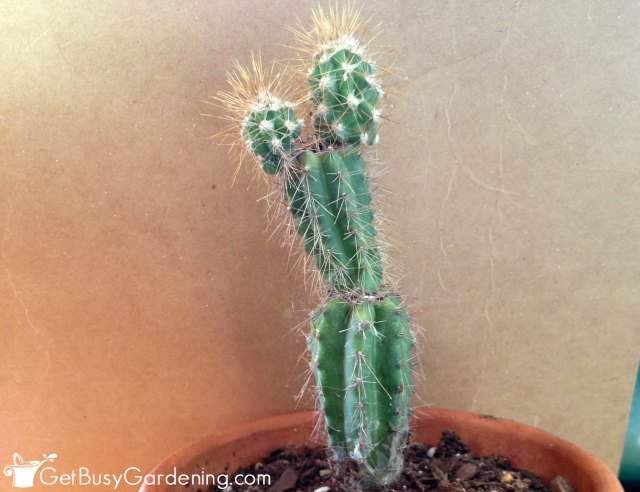
How To Save A Cactus Rotting Bottom Up
Unfortunately, if the bottom of the stem or the roots are rotten, then the only way to save your cactus is to try propagating a healthy cutting.
Take your cutting just above the rotting section. Then follow the steps above to remove additional layers as necessary to get rid of all of it.
Allow the cutting to dry for several days until the end has callused over. Then dip it in rooting hormone and stick it into a sandy soil mix.
Don’t water it until you see new growth on the cutting. Depending on the variety you have, it can take several weeks for roots to develop.
Related Post: How To Make Your Own Cactus Soil Mix (With Recipe)
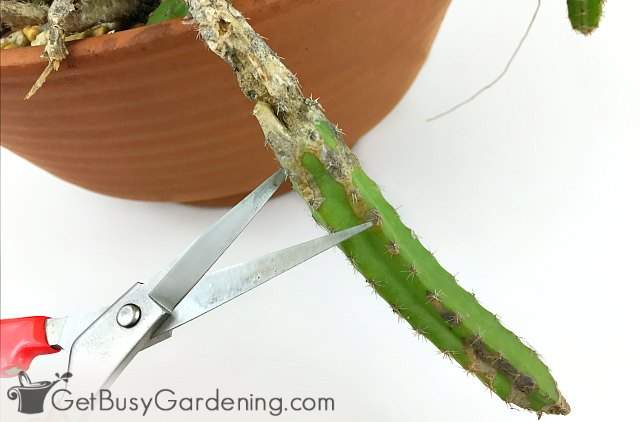
If you want to learn all there is to know about maintaining healthy indoor plants, then you need my Houseplant Care eBook. It will show you everything you need to know about how to keep every plant in your home thriving. Download your copy now!
More Houseplant Care Posts
- How To Grow Indoor Plants: The Ultimate Guide
- Houseplants Don’t Like Drafts
- How To Rebloom Your Amaryllis Plants
- How To Fertilize Houseplants
- Why Do Spider Plant Tips Turn Brown & How To Fix It
- Why Do Cyclamen Leaves Turn Yellow & How To Fix It
Share your tips for saving a rotting cactus in the comments section below.
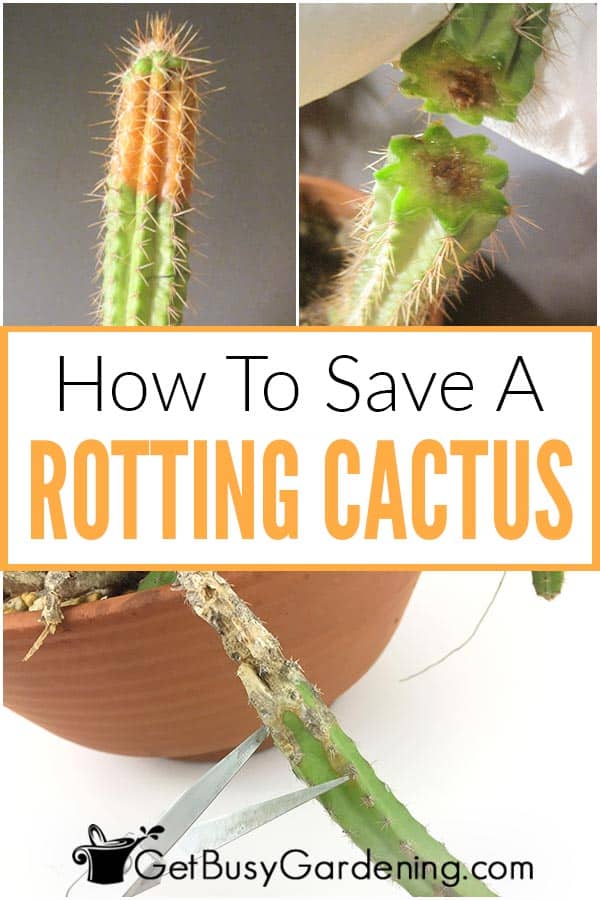
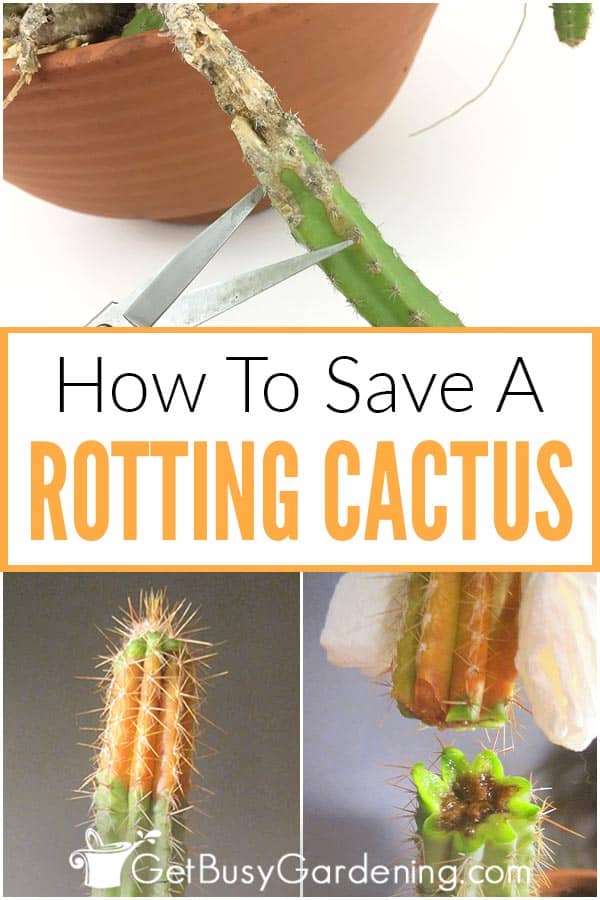
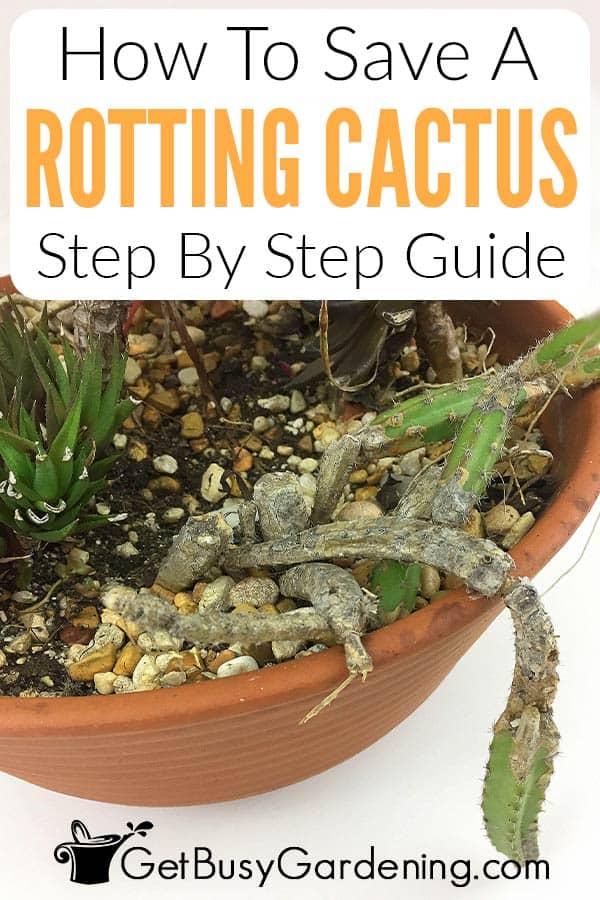
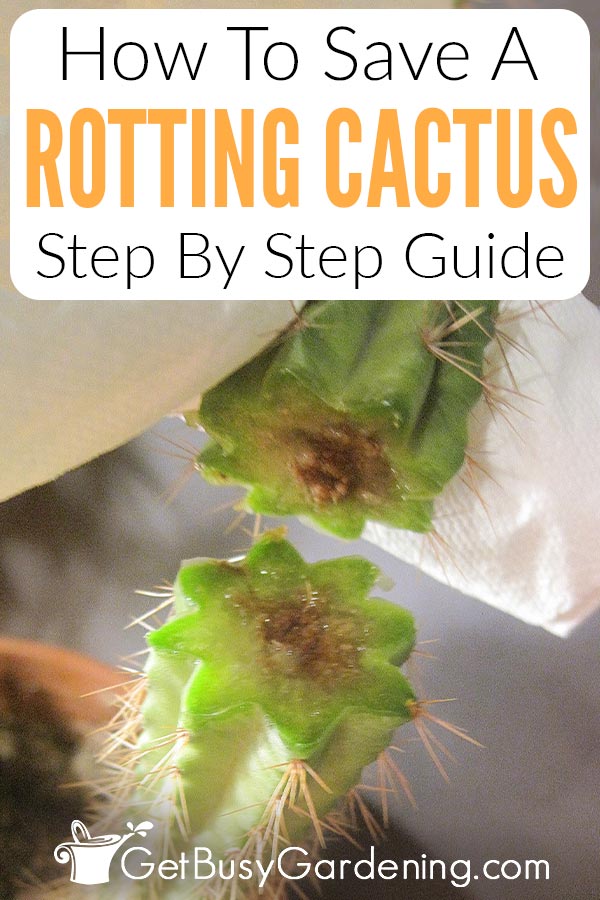
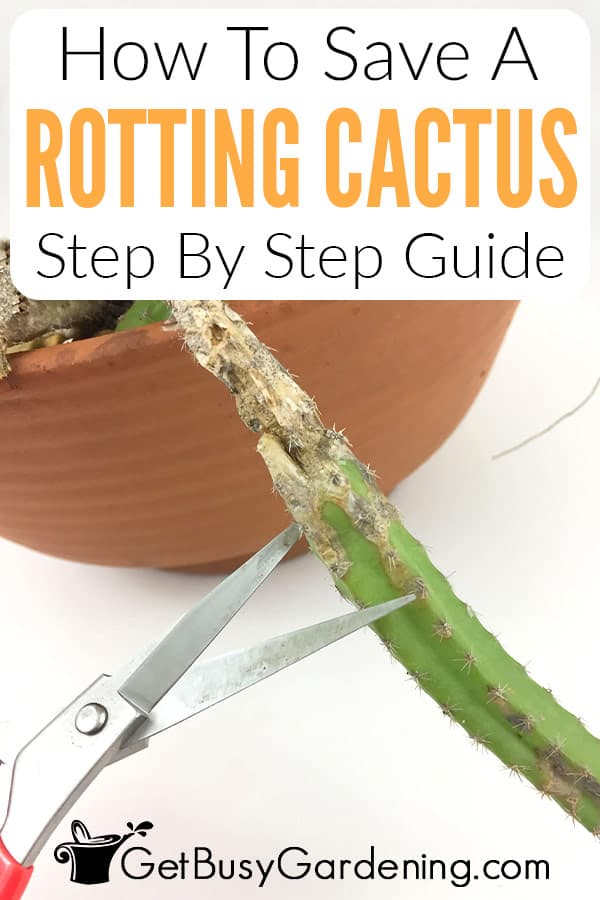




Leave a Reply